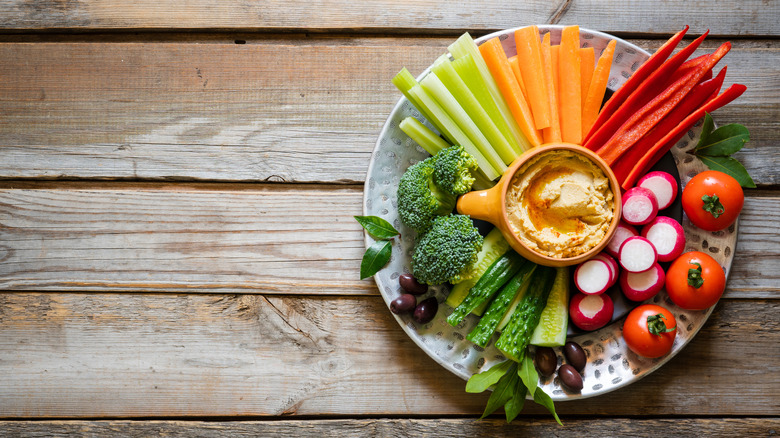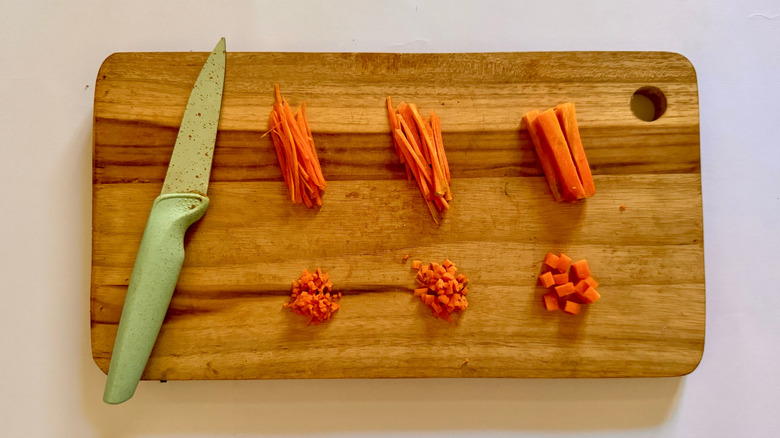Julienne Vs Batonnet Cuts: What's The Actual Size Difference?
There are plenty of ways to prep the ingredients in your kitchen, so let's take a deeper dive into two cutting techniques in particular: julienne and batonnet. You've likely heard the term "julienne" — or an alternative like matchstick or French-cut -– tossed around before. To be considered julienned, your veggie needs to be cut into uniform sticks measuring about ⅛ inch. This precise and delicate cut is great for garnishes, salads, stir-fry veggies, or any dish where the vegetables need to cook quickly and evenly. When you cut julienned pieces crosswise, you are left with a fine dice (also known as a brunoise).
Then you have the batonnet cut. Pop culture didn't latch onto the term like it did with julienne, but it's a common cutting style in kitchens across the globe. The only difference between batonnet and julienne cuts is the thickness, since a batonnet cut requires slicing the vegetable down to ¼ inch strips, or twice the size of julienne matchsticks. This cut is best for dippable sticks on a veggie tray (they're a bit slimmer than the carrots from your childhood lunchbox), thin-cut french fries, and slaws. When batonnet-cut vegetables are chopped across, you get a small dice.
Tips for making julienne and batonnet cuts with ease
Have you attempted to make a julienne or batonnet cut, but they came out too thick, thin, or uneven? We've all been there. It's frustrating but totally fixable with a few easy tips that'll have you chopping like a master chef. Tip number one: Remember that the cutting board plays a pivotal role in how well you can slice things. It's not uncommon for a home cook to make major knife mistakes when using cutting boards or to pick boards that dull knives (looking at you, bamboo). Second, it is imperative to keep your knife well-maintained and sharpened, and never put it in the dishwasher. The third key thing to do is to choose the best knife from the start, since they maintain their edge longer and stand up to frequent sharpening well. It'll cost more, but a good knife pays for itself in ease and convenience.
Once you have the right board and a sharp knife, always start by squaring your vegetables. Take your veggie (such as a carrot, turnip, parsnip, radish, or cucumber), cut off the top and bottom, and then trim off the rounded sides to get four flat surfaces. You'll be left with a rectangular prism or cube that you can then cut into appropriately thick blanks, depending on whether you're doing a batonnet or julienne. Slice those planks into strips, and there you have it: perfectly cut veggies at the exact size you need them, every time.

